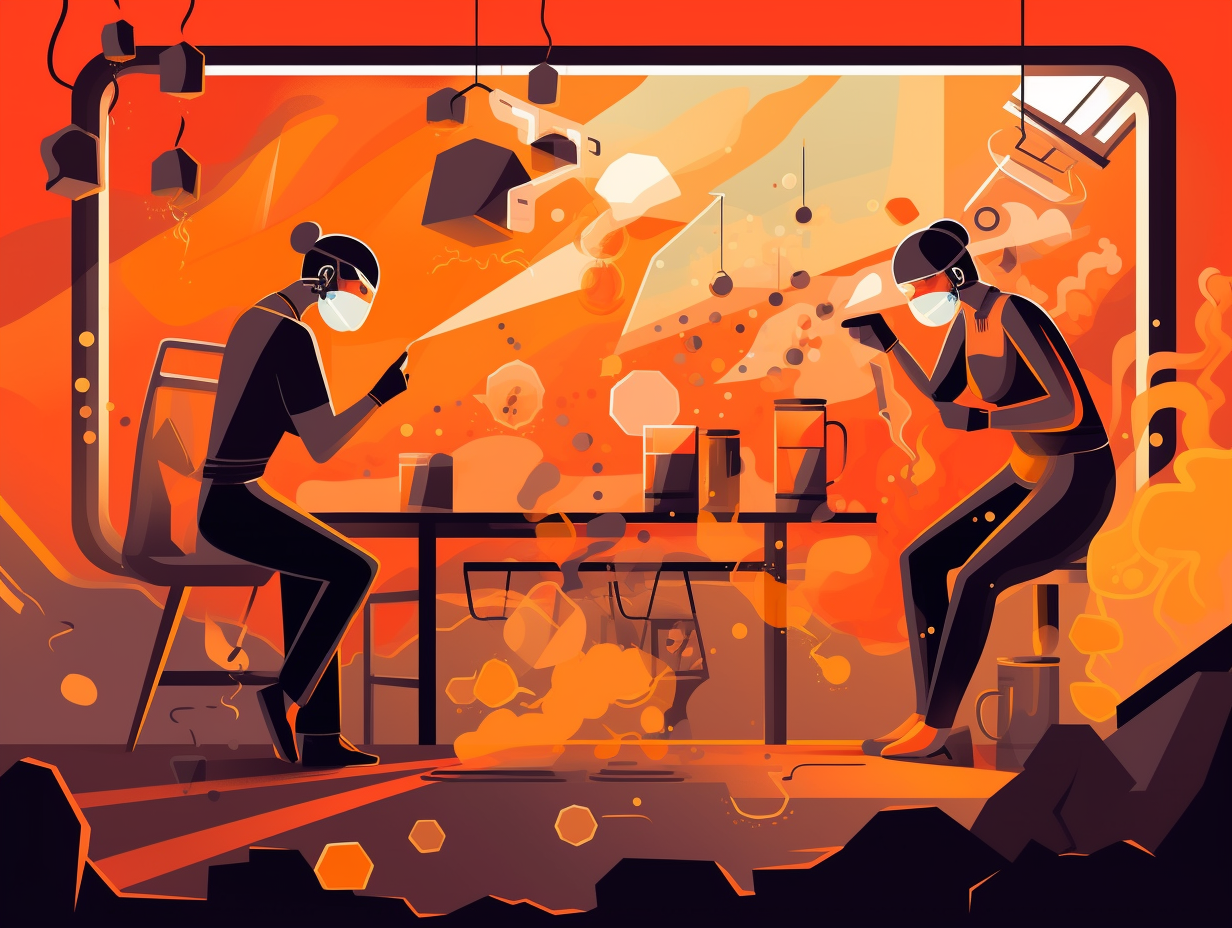Electrifying Discoveries: Top 14 Fun Facts About Alkali Metals You Never Knew!

1. Drama Queens of the Periodic Table
You might call alkali metals the "Drama Queens" of the periodic table – they make a scene, steal the spotlight, and change outfits faster than Lady Gaga on tour: As you progress from lithium to potassium, these metals react more vigorously with water, releasing hydrogen gas and heat. While lithium gently fizzes, sodium morphs into its own flaming yellow-orange ball, and potassium earns the coveted purple flame award in a fiery, anxiety-producing performance. This increasing reactivity down Group 1A stems from the outermost electron's growing distance from the nucleus, making these metals the ultimate show-stoppers in chemistry class.
Source => chemdemos.uoregon.edu
2. Fiery Hot Tub Party Crashers
If alkali metals tried to take a leisurely bath, they would likely end up with a fiery hot tub party: they're extremely reactive when exposed to water, causing the release of hydrogen gas, and even catching fire. As the life of the soiree, metals like lithium, sodium, and potassium boast the delightful trait of low melting points, contributing to their potentially hazardous but unforgettable interactions with water and air.
Source => byjus.com

Did you know sodium is the ultimate socialite of the elements? Find out how it's always bonding and thriving in compounds like sea salt (NaCl).
=> Fun Facts about Sodium
3. Dazzling Flame Test Dancers
When alkali metals decide to throw a party, they don't just bring any ol' light show: they set the stage on fire with vibrant flames, each element flaunting its own signature color! Seriously though: When heated in a flame test, alkali metals like potassium, sodium, and lithium produce a dazzling display of colors: lilac, yellow-orange, and crimson, respectively – all thanks to the unique electronic structures of their atoms.
Source => toppr.com
4. Explosive Power Increases Down the Group
Move over, Beyoncé, because the real stars of the periodic table are bringing the explosive power to the stage: alkali metals' reactivity dramatically increases down the group, with lithium sizzling in water while rubidium and cesium can even cause eruptions—thanks to their increased size and lower ionization energy that makes it easier for their valence electrons to steal the show!
Source => angelo.edu

5. Bunsen Burner Dance Floor Stars
It's a party in a Bunsen burner, and alkali metals brought the fireworks and pyrotechnics: When these metals take their turn on the dance floor of flames, each one grooves with a unique color — lithium's boogie is a bright red, while sodium sways with a yellow/orange hue — all thanks to their electrons getting pumped up by the heat, jumping to higher energy levels, and emitting distinctive light wavelengths, making them stars of flame tests to identify their presence in compounds.
Source => britannica.com
6. The Wild Rebel Elements with Practical Sides
Handle with flair, not with water: Alkali metals like sodium and potassium are party crashers, igniting a fiery spectacle when they meet H2O or take a gasping breath of air. But despite their wild streak, these rebel elements serve practical purposes, from lighting up fireworks to lithium's role in calming the storm of bipolar disorder and depression.
Source => angelo.edu
7. Renewable Energy Sidekick
Holy lithium, Batman! We've got ourselves a renewable energy sidekick: Spent lithium-ion batteries can be recycled to recover valuable metals, such as lithium, cobalt, nickel, and manganese, paving the way for cleaner and greener production of critical metals needed in our quest for a sustainable future.
Source => researchgate.net
8. Explosive Masters of Shedding Electrons
Step aside, firecrackers and popcorn – there's a new explosive in town, and it's been hiding in the periodic table all along: Alkali metals, like potassium, not only love to party with water so much they might burst, they also have the lowest ionization energies of all elements, making them masters of shedding their outer electron and turning into positively charged party animals useful in various industrial and scientific shindigs.
Source => en.wikipedia.org
9. Potassium's Firework Stardom
When potassium isn't busy giving bananas their superstar status or fueling the fears of the health-conscious with the ominous mention of potassium cyanide, it enjoys dazzling us with explosive entertainment: Unlike its other seemingly mundane roles, potassium serves as a vital oxidizer in fireworks, with potassium nitrate, potassium chlorate, and potassium perchlorate all being commonly used to ensure a brilliantly bright and awe-inspiring light show.
Source => thoughtco.com

10. Alkali Metals' Water-Based Reality Show
If alkali metals were contestants on a water-based reality show, they'd make quite the splash – from lithium's sizzling soiree to cesium's explosive finale: Alkali metals become increasingly reactive with water as you move down the group, due to their valence electrons being farther from the nucleus, making these elements valuable for various chemical reactions and scientific applications.
Source => angelo.edu
11. Superhero Elements with Posh Accents
If alkali metals were superheroes, they'd be the ones to arrive fashionably late, speak with posh accents, and commit to a strict silver-only wardrobe policy: Alkali metals are known for being super reactive due to their large atomic radii and low ionization energies, and they're identifiable by their soft texture, silvery colors, and low boiling and melting points, all while sporting a +1 oxidation state and an undeniable charm.
Source => chem.libretexts.org
12. Peter Pans of the Periodic Table
Did you know alkali metals are basically the Peter Pans of the periodic table, refusing to grow up as they move on down the line? No, seriously: their boiling and melting points actually decrease as you descend Group 1! Blame it on a weakening metallic bond caused by increasing atomic size and a greater distance between nuclei and delocalized electrons.
Source => chem.libretexts.org
13. Spontaneously Igniting Party Guests
If alkali metals were party guests, they'd surely be the ones to make a surprise entrance with a bang: rubidium and cesium, for instance, can spontaneously ignite upon exposure to air at room temperature, making them quite the reactive showstoppers with special safety precautions needed when handling them.
Source => ehs.stanford.edu
14. Single and Ready to Bond
If alkali metals had dating profiles, they'd just declare: "Single and ready to bond!" with a saucy wink: Due to their single valence electron in the s-subshell, alkali metals like sodium (Na) and potassium (K) are highly reactive, easily forming salts when bonding with other elements, and exhibiting fascinating properties such as diamagnetism and paramagnetism that make them useful in MRI scanning and magnetic levitation.
Source => toppr.com
Related Fun Facts




















